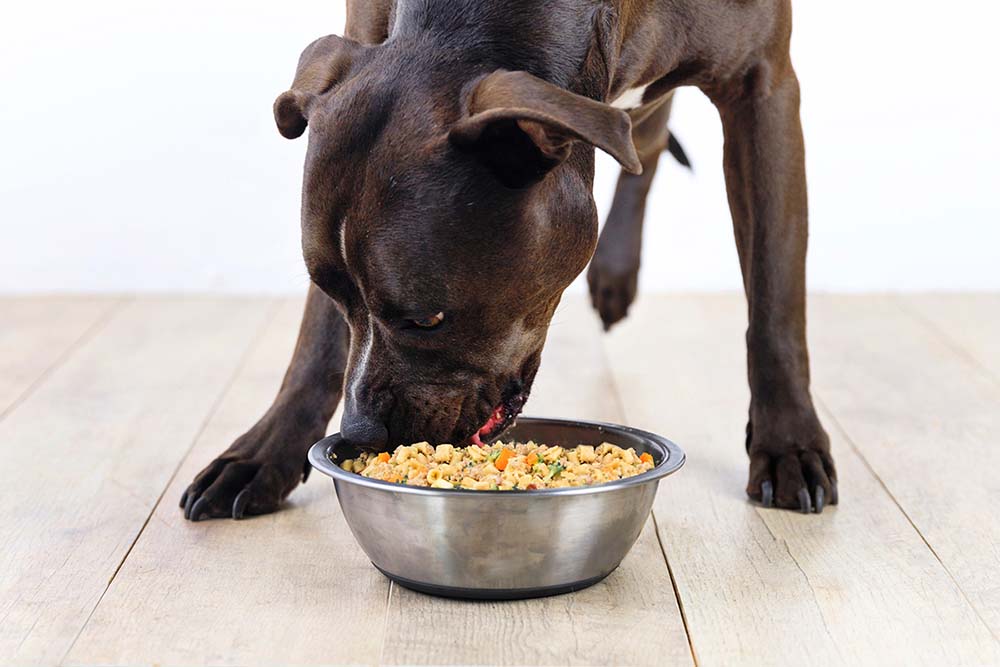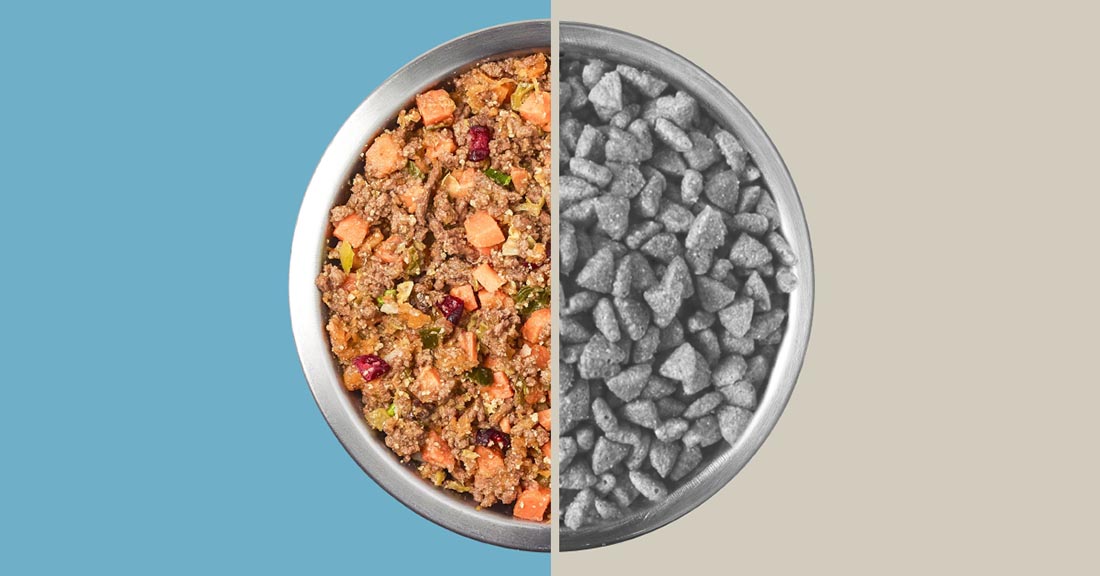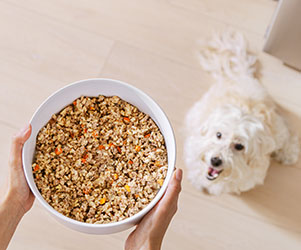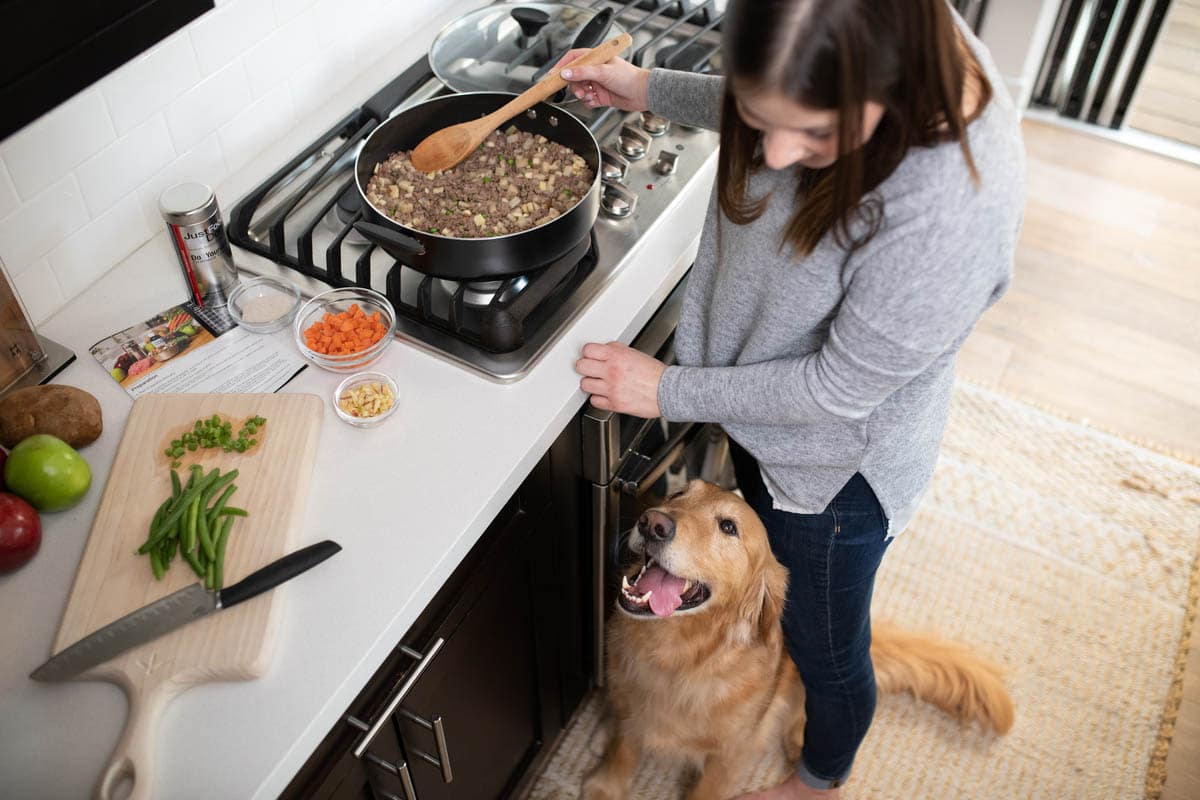What Is Air-Dried Dog Food?
With the wide variety of pet food options available, one particular type that has cropped up recently is air-dried dog food.
In recent years, dog owners have become increasingly conscious about the quality of their pup’s nutrition. With the wide variety of pet food options available, one particular type that has cropped up recently is air-dried dog food.
In this blog post, we will explore what air-dried dog food is and how it compares to lightly cooked fresh dog food. We will also discuss the existing research supporting these feeding methods.
Air-Dried Dog Food: What Is It?
Air-dried dog food is a type of dog food that undergoes a unique drying process. It involves gently removing moisture from raw ingredients without applying excessive heat.
The process typically includes mixing fresh ingredients, such as high-quality real meats, fruits, vegetables, and sometimes grains, and then slowly drying them at low temperatures. This method helps retain more of the natural nutrients while preserving the food without the need for artificial preservatives.
The gradual drying process allows the preservation of essential nutrients, which can be lost in traditional kibble manufacturing methods involving high heat and prolonged cooking.
Air-dried dog food is often seen as a compromise between raw food and kibble diets. It can offer the convenience of dry food with the benefits of a more natural, minimally processed diet.
Air-dried vs. freeze-dried vs. dehydrated dog and cat food
The air-dried method differs from freeze-dried dog food toppers and dehydrated raw dog food. Air-drying removes moisture by evaporation. With freeze-dried dog food, all moisture is removed while the food is frozen in its raw state. Dehydrated dog food draws moisture out under low heat for a long period of time.
Cooked Fresh Dog Food vs. Air-Dried Dog Food

When comparing cooked fresh dog food to air-dried dog food, both options have their advantages and considerations. Cooked fresh dog food involves preparing meals from scratch using human-grade, fresh, whole, high-quality ingredients, which allows for greater control over the ingredient list and cooking methods.
This approach enables customization to meet specific dietary requirements or address individual sensitivities.
On the other hand, the air-drying process of dog food offers the convenience of being shelf-stable. Unlike fresh dog food, it does not require refrigeration, though some fresh dog foods do come in shelf-stable options.
Both methods help to retain more nutrients compared to traditional kibble production. Commercial dog food involves high-temperature cooking, preservatives, and fillers that give it a longer shelf life.
Is There Research to Support Either Diet’s Benefits? Yes and No.

“To my knowledge, there is no peer-reviewed (i.e. good) research or evidence demonstrating that there is a nutritional benefit to air-drying dog food,” says Dr. Vincent Michels, DVM, the Director of Veterinary Nutrition and Research at JFFD. “Drying is really more of a food-preservation method used to limit the useable water in a food item to prevent/delay microbial growth.”
Limited studies have specifically evaluated air-dried pet food, but anecdotal evidence suggests that the drying process helps preserve nutrients. There are, however, published scientific studies that demonstrate the value of fresh dog food diets.
Existing peer-reviewed studies indicate the benefits of fresh dog food such as improved skin and coat health, reduced digestive issues, and better weight management.
It is essential to note that an individual dog’s nutritional requirements can vary based on factors such as life stage, breed, activity level, and specific health conditions. A dog with dermatological and/or joint issues may need more omega-3 fatty acids than a dog without those problems. While you could use supplements, fresh dog food can be customized to your dog’s specific needs. Pet parents should consult with a veterinarian or veterinary nutritionist to ensure that your dog’s diet meets its nutritional requirements.
Note: A recent UK study found that air, freeze-dried, or dehydrated dog food or treats can contain trace amounts of Salmonella, a common risk of raw diets and raw meat in general.
What’s the Best Dog Food? It Depends.
Gently cooked fresh food for dogs offers customization options while air-dried dog food does not. Ultimately, there is more research to substantiate the proposed benefits of fresh dog food than there is for air-dried dog food.
The best choice for your dog depends on their unique needs and preferences. Consulting with a veterinarian or veterinary nutritionist can help you make an informed decision and provide your furry companion with a well-balanced and wholesome diet.
Remember, providing a nutritious diet, regular exercise, and veterinary care are essential for ensuring the overall health and wellness of your four-legged friend.
This content is for informational use only and does not replace professional nutrition and/or medical advice, diagnosis, or treatment. It is not a substitute for and should not be relied upon for specific nutrition and/or medical recommendations. Please talk with your veterinarian about any questions or concerns.
Citations
Geary, Elizabeth L, Kelly S Swanson, and James Templeman. 2023. “193 Apparent Total Tract Nutrient Digestibility of Frozen Raw, Freeze-Dried Raw, Fresh, and Extruded Dog Foods and Their Effects on Fecal Characteristics and Metabolites of Adult Dogs.” Journal of Animal Science 101 (Supplement_3): 101–2. https://doi.org/10.1093/jas/skad281.123.
Whitworth, Joe. 2023. “Researchers Highlight Human Health Risks from Contaminated Pet Treats.” Food Safety News. February 24, 2023. https://www.foodsafetynews.com/2023/02/researchers-highlight-human-health-risk-from-contaminated-pet-treats/.








